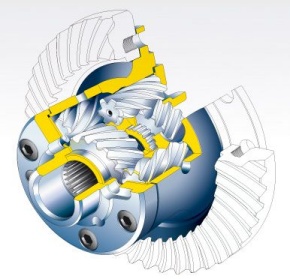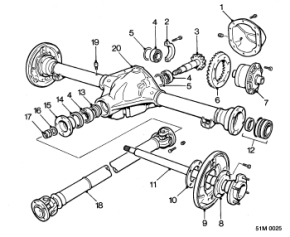


| 388 How does a Quaife differ from a limited slip differential? Nic Houslip explains how they differ. (Apr 14) The founder of Quaife was Rod Quaife, whom I new slightly. He was a motorcycle racer in the 60s and 70s and started with 5 speed gear clusters for 4 speed motorcycle gearboxes. Normal differential A differential gear set allows the drive ot be divided between to output shafts (the half shafts in our case) but they only work when the load on each shaft is the same - that is both wheels with equal grip. In a normal differential the drive goes to the one with the lowest grip and the wheel spins, but as the output speed of the unloaded shaft will be higher by the same amount that the loaded wheel gripping is slower. If you jack the car up and rotate the prop shaft with one wheel held still the other will rotate twice as fast as it should. However in a Limited Slip (or "Locker" as the Americans call them) the difference in rotational speed of the two half shafts is limited. Most systems use a simple clutch driven by cams that lock the two half shafts together and more force is applied to the clutch to force the lock as the speed difference increases. |  There is an interesting diagram and explanation of the Quaife differential on their website - see diagram above. Quaife differential The Quaife uses a different and rather complex system of spiral gears that actually sense the difference in torque (thus a spinning wheel lets more drive go to the other) so the system is progressive. I understand that one of the reasons there are no |  bearings as such is due to the very high bearing loads necessitated by the spiral gears and as the rotation speed of these gears is normally zero when travelling in a straight line (the case most cars spend the majority of their time in) and only a partial revolution when working steel on iron or steel is quite satisfactory. Incidentally almost all Japanese motorcycles have a steel on die cast aluminium cylinder head as a bearing surface for their camshafts and many gearboxes have steel on steel rubbing surfaces where the speed difference is small. |
| RV8
information and support See our popular RV8NOTES listing, information gateways, top tips, spares and services specialists and spares for sale and wanted. | RV8
Workshop Notes Information Gateways Top tips for new RV8 enthusiasts | Technical
topics Spares & services specialists V8 spares for sale and wanted |